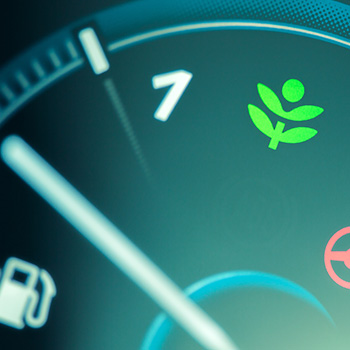Optimizing Vehicle Fuel Efficiency: Start/Stop Technology
 Not only do vehicles consume fuel while in motion, but also while sitting completely still! Your car wastes energy and fuel while sitting at red lights, stuck in traffic, waiting to pick up passengers, and warming up in cold weather months. The average American spends about 15 minutes per day idling a vehicle. And a study by The Hinkle Charitable Foundation revealed that Americans spend 3.8 million gallons of fuel each day while idling their vehicles.
Not only do vehicles consume fuel while in motion, but also while sitting completely still! Your car wastes energy and fuel while sitting at red lights, stuck in traffic, waiting to pick up passengers, and warming up in cold weather months. The average American spends about 15 minutes per day idling a vehicle. And a study by The Hinkle Charitable Foundation revealed that Americans spend 3.8 million gallons of fuel each day while idling their vehicles.
Start/Stop Technology
To cut this waste and help drivers save money, many automobile manufacturers are harnessing the power of start/stop technology. This can offset some of the wasteful and environmentally harmful effects of idling. One big example is Chevrolet, which has equipped its popular Malibu cars with start/stop technology that has been widely adopted by drivers.
How Start/Stop Technology Works
Keeping the Chevy Malibu in mind as an example, this technology works because the system uses two batteries – a 12-volt in the rear and a 12-volt under the hood. Like hybrid cars, these cars shut off their engines during idling conditions like traffic lights. The second battery kicks in when the engine turns on to keep the radio playing, the heat or air conditioning pumping, and the doors and windows functional. Drivers have the option of putting a higher priority on efficiency or air conditioning. Meanwhile the first battery conserves energy, allowing the car to restart quickly when the traffic light finally turns green.
As a general rule, there are three parts involved in a start/stop system: the gasoline engine, an electric starter or generator, and a battery. These systems rely on regenerative braking to create electricity from the rotational energy of turning wheels. The engine starts back up again as soon as a driver presses the accelerator.
Impact on the Environment
A GM publication reported that the millions of gallons of gas wasted from idling equals the annual greenhouse gas emissions from 7,112 passenger vehicles, 612,180 tons of waste sent to landfills, and 40,000 tons of carbon dioxide per day. These figures suggest that start/stop technology could have a seriously positive effect on the quality of our air and the overall environment.
The Spread of Start/Stop Technology
According to a Navigant Research report, the sales of vehicles with start/stop technology are expected to grow to an estimated 55.4 million in the year 2022. For reference, only 8.8 million vehicles were equipped with this technology in 2013.
Non-hybrid vehicles that that have start/stop systems include the BMW M3, the Porsche Cayenne and Panamera, and the Mercedes Benz CL63AMG and S63AMG. There are many hybrid vehicles equipped with this technology manufactured by Chevrolet, Ford, GMC, Lexus, Lincoln, BMW, Honda, and Hyundai. This is incredibly promising technology that is improving every year and making our roads a little bit greener.
Categorized in: Driving, Technology
